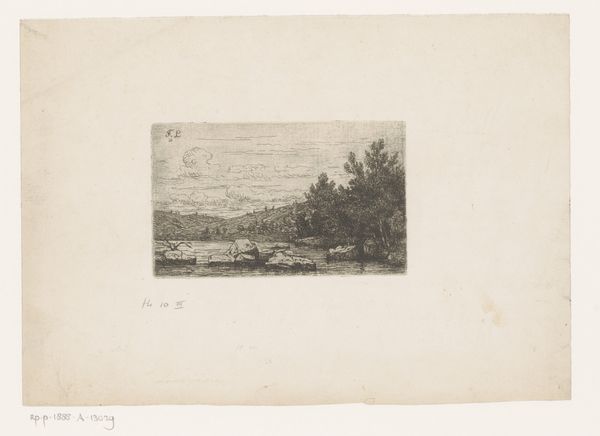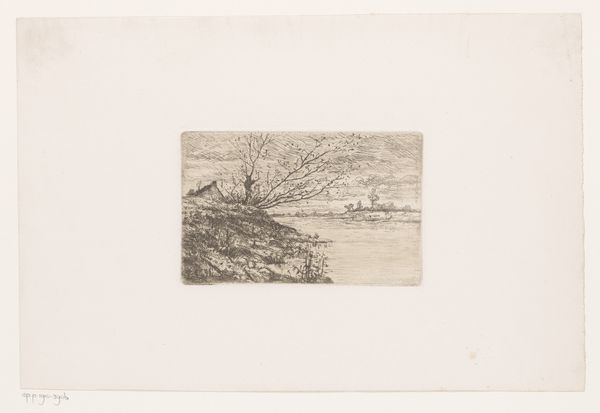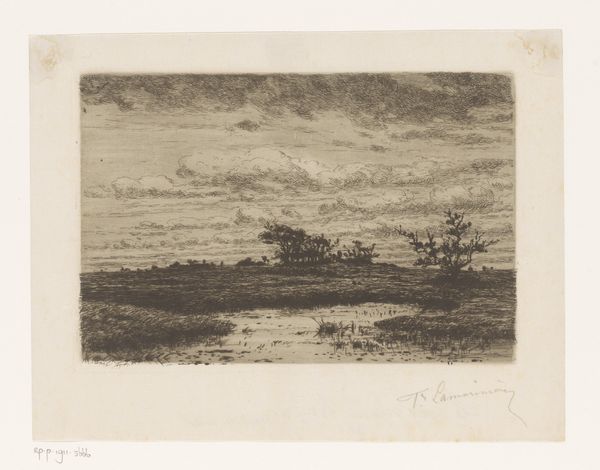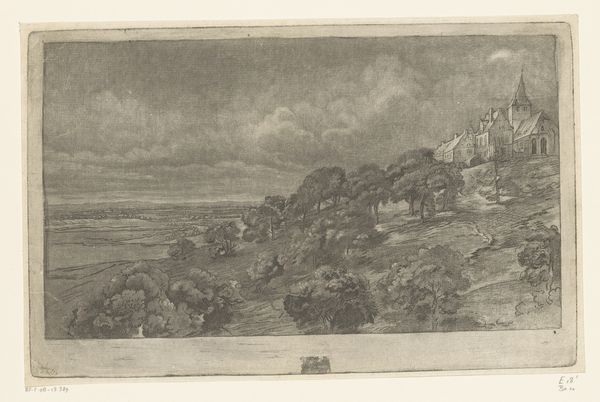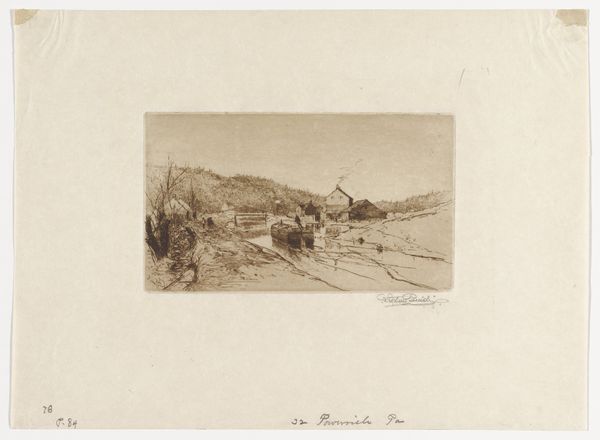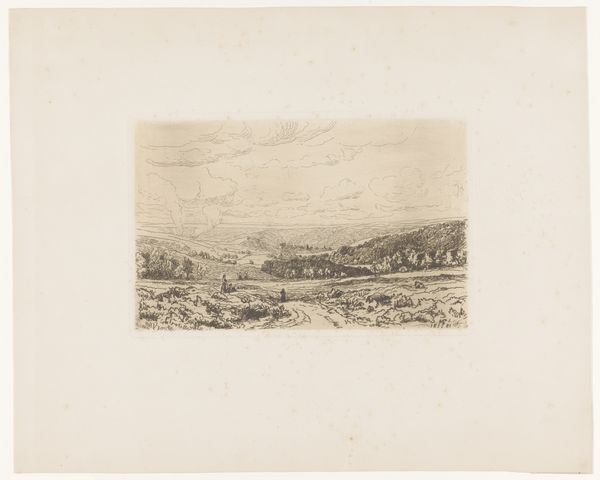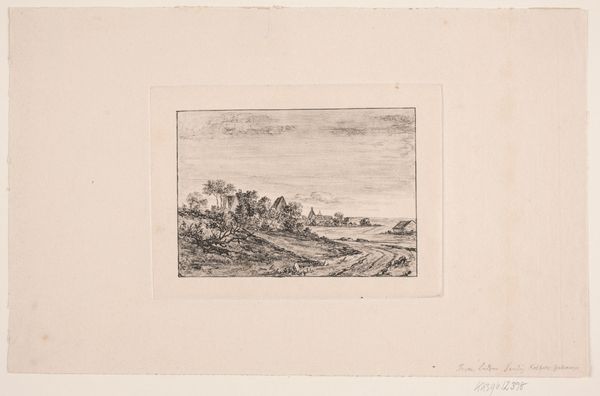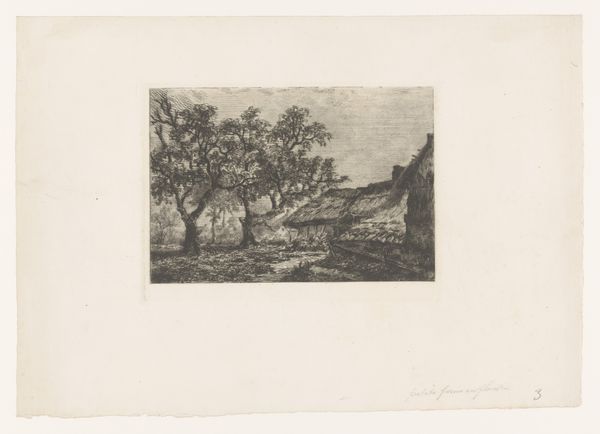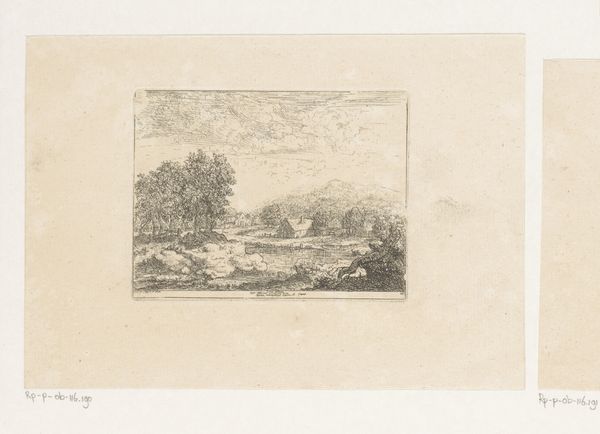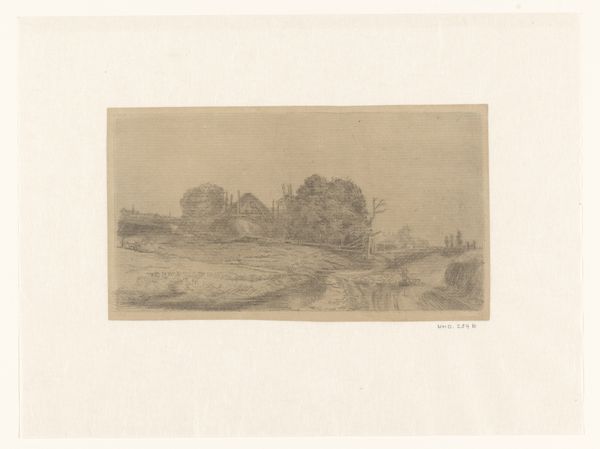
print, etching
#
16_19th-century
# print
#
etching
#
landscape
#
river
#
realism
Dimensions: height 78 mm, width 128 mm
Copyright: Rijks Museum: Open Domain
Editor: This is "Oevers van de Amblève bij Targnon," a landscape print made by Jean Pierre François Lamorinière sometime between 1838 and 1888. It’s an etching, which gives it a very detailed, almost delicate look. It has a quiet mood, don't you think? I’m curious, what do you see in this piece, focusing on its materiality and production? Curator: Beyond the image, I see a convergence of labor, material, and societal values. Think about it: copper, acid, paper – all extracted, processed, and refined through labor. The artist then manipulates these materials through skill and labor to produce this image. Editor: That’s fascinating. So you’re saying the image itself is less important than understanding how it came into being? Curator: Precisely. How does the process of etching, with its acid baths and the repetitive act of mark-making, affect our understanding of landscape? Consider too, the social context. Prints were a popular medium for mass dissemination. Was Lamorinière attempting to democratize access to the Belgian landscape, or was he simply participating in the burgeoning market for picturesque scenes? What materials were used, where were they sourced, and what labor went into it all? Editor: That brings up so many questions about accessibility and consumerism! Was he responding to an urban audience desiring images of nature? Curator: Exactly! It's important to acknowledge the social meaning imbedded into the art object. It pushes us to consider what such depictions of rivers may say about industrial needs and use, even abuse, of land in that period. Editor: Wow, I never considered all the layers of material and labor involved. I now see how analyzing its production helps us really understand the artist and this moment in time. Curator: Indeed, it opens new avenues for interpreting artistic expression and its social impact.
Comments
No comments
Be the first to comment and join the conversation on the ultimate creative platform.
